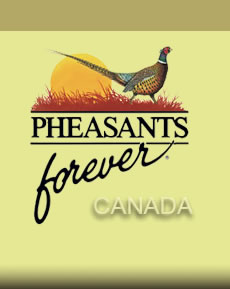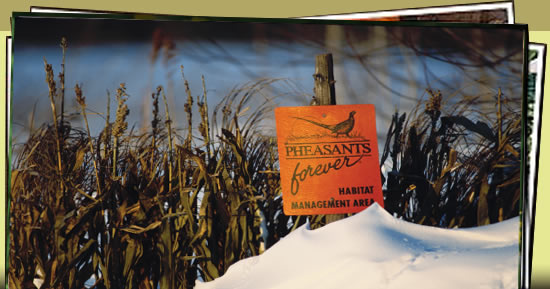

|
Pheasants Forever Calgary is dedicated to the protection and enhancement of pheasant and other wildlife populations in southern Alberta . It was formed in 1993 by six Albertans who were passionately concerned with the declining southern Alberta 's leaders in upland wildlife habitat conservation and restoration. The primary aim of the chapter is to increase upland game bird and other wildlife populations in southern Alberta by enhancing the quantity and quality of wildlife habitat. Habitat restoration and enhancement projects include planting trees, shrubs and grasses to create shelterbelts and grassy corridors for wildlife travel lanes and protective cover; planting good quality nesting cover for ground nesting birds; fencing out existing or newly planted habitat areas to promote growth and limit livestock access; developing riparian buffer zones; protecting cattail marshes for winter thermal cover and setting up winter food plots and emergency feeding stations as seasonal food sources. These projects not only enhance wildlife habitat, they benefit our environment by improving water quality and reducing soil erosion. To accomplish its goals, PF Calgary has aligned itself with a long list of like-minded partners, spanning industry and conservation organizations, corporations, private foundations, individuals and various government agencies. Their valuable funding contributions, in-kind and technical assistance enable the chapter to continually increase the amount of influenced habitat acres for the benefit of wildlife. This strategy allows all partners to achieve environmental milestones far greater than what any one organization could accomplish alone. As one of Alberta 's most progressive and pro-active conservation organizations, the Calgary Chapter remains focused on the long-term future of hunting, habitat and wildlife by participating in these key initiatives: Partners in Habitat Development Program (PHD) The PHD program is the largest and most involved project PF Calgary participates in. Founded in 1998 by PF Calgary and the Eastern Irrigation District headquartered in Brooks, helps to redevelop and enhance wildlife habitat throughout the cultivated regions of Southern Alberta , primarily on privately-held land. Six of the largest irrigation districts in Southern Alberta are participating in the program representing over 1.1 million acres of land. Over 350 landowners have invited the PHD program to implement planting, fencing and irrigation canal rehabilitation projects on their lan to help increase the quality and quantity of wildlife habitat. Between 1998 and 2006, the PHD positively influenced over 35,000 acres of upland wildlife habitat by planting over 492,000 trees and shrubs, seeding 600 acres to permanent grass cover, installing over 116 kilometers of fencing on 114 projects, installing 28 water deliveries and 59,430 meters of drip tape irrigation, and enhancing or creating 13 wetland basins. To date over $2,850,000 has been apportioned to habitat projects by PHD in Southern Alberta . Events 25th Annual Dinner and Auction Wednesday, May 2, 2018 5:00 pm Palomino Room, BMO Centre, Stampede Park Board Members Tom Bratrud Bill Friley Chris Kolozetti Michael Mannas Perry McCormick Harvey McKernon Bob Merkley Mike Perkins Glen Rumpel Nick Stanford Contact Us Perry McCormick
|

Pheasants Forever Canada Inc. is dedicated to the conservation of pheasants and other upland wildlife through habitat improvements, public awareness, education and land management policies and programs. Habitat restoration and enhancement projects include planting trees, shrubs and grasses to create shelterbelts and grassy corridors for wildlife travel lanes and protective cover; planting good quality nesting cover for ground nesting birds; fencing out existing or newly planted habitat areas to promote growth and limit livestock access; developing riparian buffer zones; protecting cattail marshes for winter thermal cover and setting up winter food plots and emergency feeding stations as seasonal food sources.
|